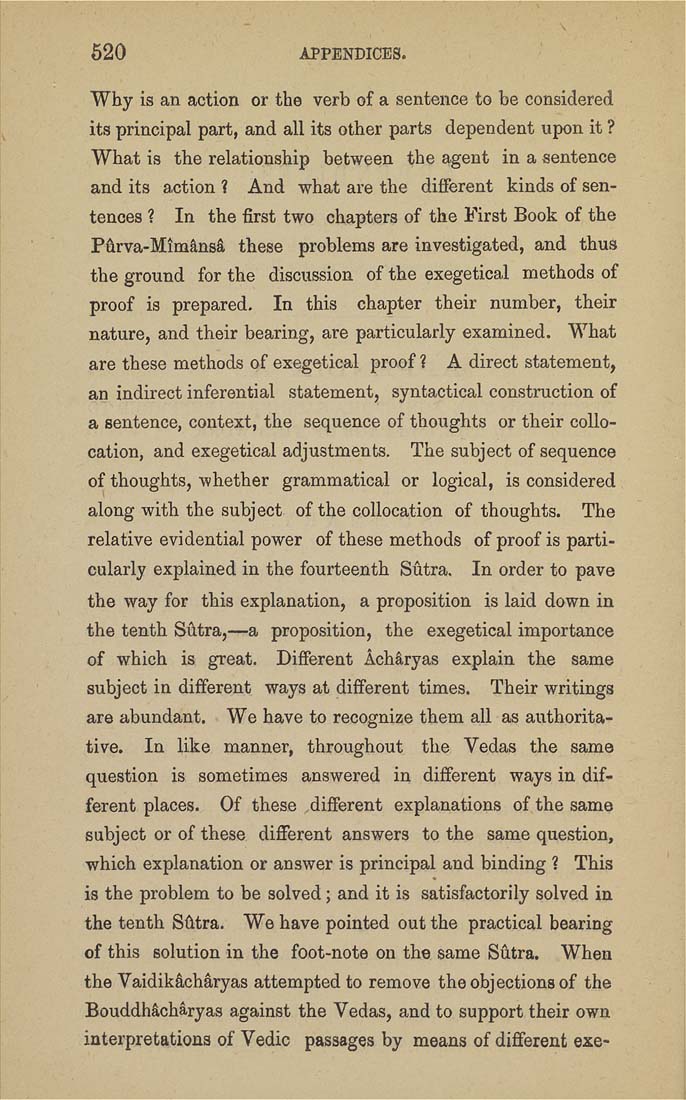520 APPENDICES,
Why is an action or the verb of a sentence to be considered
its principal part, and all its other parts dependent upon it ?
What is the relationship bet-ween the agent in a sentence
and its action ? And what are the different kinds of sen¬
tences ? In the first two chapters of the First Book of the
Pftrva-MtmansS. these problems are investigated, and thus
the ground for the discussion of the exegetical methods of
proof is prepared. In this chapter their number, their
nature, and their bearing, are particularly examined. What
are these methods of exegetical proof ? A direct statement,
an indirect inferential statement, syntactical construction of
a sentence, context, the sequence of thoughts or their collo¬
cation, and exegetical adjustments. The subject of sequence
of thoughts, whether grammatical or logical, is considered
along 'with the subject of the collocation of thoughts. The
relative evidential po'wer of these methods of proof is parti¬
cularly explained in the fourteenth Sutra. In order to pave
the way for this explanation, a proposition is laid down in
the tenth Siitra,—a proposition, the exegetical importance
of which is great. Different Ach&ryas explain the same
subject in different ways at different times. Their 'writings
are abundant. We have to recognize them all as authorita¬
tive. In like manner, throughout the Vedas the same
question is sometimes answered in different ways in dif¬
ferent places. Of these ^different explanations ofthe same
subject or of these different answers to the same question,
which explanation or answer is principal and binding ? This
is the problem to be solved; and it is satisfactorily solved in
the tenth Siitra. We have pointed out the practical bearing
of this solution in the foot-note on the same Siitra, When
the VaidikAcharyas attempted to remove the objections of the
Bouddhacharyas against the Vedas, and to support their own
interpretations of Vedic passages by means of different exe-
|








